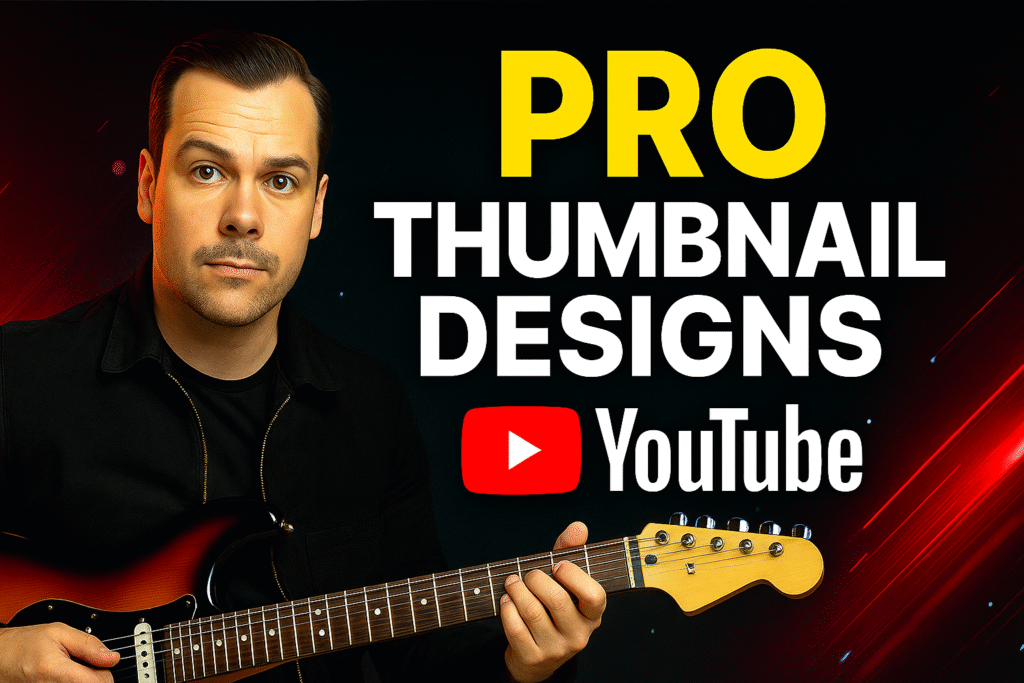

Why the Guitar is the World’s Most Popular Instrument
The guitar has achieved unprecedented global popularity, becoming the most beloved instrument across virtually every culture and musical genre. This six-string wonder has captured hearts worldwide for several compelling reasons that transcend geographical and cultural boundaries.
Universal Appeal and Accessibility

The guitar’s popularity stems from its remarkable versatility and accessibility. Unlike many instruments that require years of formal training, the guitar allows beginners to play recognizable songs within weeks of picking it up. This immediate gratification factor has made it the go-to instrument for millions of aspiring musicians worldwide.
Key factors driving guitar popularity:
- Portability – Easy to transport and play anywhere
- Versatility – Suitable for every musical genre from classical to metal
- Social instrument – Perfect for campfires, parties, and gatherings
- Expressive range – Capable of both melody and rhythm
- Affordable entry point – Decent guitars available at reasonable prices
- Cultural significance – Associated with rebellion, creativity, and self-expression
The Guitar’s Role in Music History
The guitar has been the backbone of popular music for over a century. From the blues legends of the Mississippi Delta to the rock gods of the 1970s, the guitar has shaped the sound of generations. Its ability to serve as both a lead and rhythm instrument makes it indispensable in virtually every musical ensemble.
The instrument’s emotional connection with players and audiences is unmatched. The guitar allows for incredible personal expression through techniques like bending, vibrato, and slides that make each performance unique and deeply personal.
The 70-Year Evolution of the Electric Guitar
The Birth of Electric Sound (1930s-1950s)

The electric guitar’s journey began around 1936 when jazz guitarist Charlie Christian started using an acoustic guitar with a pickup attached to the body, marking the birth of the electric guitar. This innovation solved the fundamental problem of volume limitations that acoustic guitars faced in larger venues and band settings.
In 1950, with the introduction of the Fender Telecaster to the musical market, electric guitars became a public craze. This marked the beginning of mass production and widespread adoption of electric guitars.
The Golden Age of Innovation (1950s-1960s)
The 1950s and 1960s saw explosive innovation in electric guitar design:
Landmark Models:
- 1950 Fender Telecaster – The first mass-produced solid-body electric guitar
- 1952 Gibson Les Paul – Introduced the humbucker pickup and mahogany body
- 1954 Fender Stratocaster – Revolutionary tremolo system and three-pickup configuration
- 1958 Gibson Flying V and Explorer – Radical body shapes that influenced modern design
Technological Advances (1970s-1990s)
Humbucker pickups, the whammy bar, multi-pickup configurations, and various tone and volume controls were introduced, allowing musicians to craft unique sounds and leading to the explosion of new music genres including rock ‘n’ roll, blues, country, heavy metal, and funk.
Key innovations during this period:
- Multi-effects pedals – Expanding sonic possibilities
- Locking tremolo systems – Improved tuning stability
- Active pickups – Higher output and clarity
- Seven and eight-string guitars – Extended range for metal and jazz
- Modeling technology – Digital recreation of classic amplifiers
Modern Era and Digital Integration (2000s-Present)
Today’s electric guitars incorporate cutting-edge technology:
- Digital modeling – Guitars that can emulate hundreds of different sounds
- Wireless systems – Freedom from cables during performance
- USB connectivity – Direct recording to computers
- Smartphone integration – Apps for learning, tuning, and effects
- Sustainable materials – Eco-friendly alternatives to traditional tonewoods
YouTube Guitar Channels: The Digital Revolution
The Rise of Guitar Content on YouTube
YouTube has fundamentally transformed how people learn guitar and consume guitar-related content. The platform has democratized guitar education, making world-class instruction available to anyone with an internet connection.
The evolution of YouTube guitar content:
- 2005-2010 – Early adopters posting basic tutorials
- 2011-2015 – Professional musicians embracing the platform
- 2016-2020 – Specialized channels and high-production content
- 2021-Present – Interactive features and live streaming integration
Current Landscape of Guitar YouTube
The YouTube guitar community has exploded into a diverse ecosystem of creators serving every niche imaginable. From beginner tutorials to advanced masterclasses, from gear reviews to entertainment content, guitar YouTubers have created a comprehensive digital universe.
The Dominant Forces: Top YouTube Guitar Creators
Current YouTube Guitar Royalty
According to recent analysis, Marty Music tops the list with 3.7 million subscribers, with Rick Beato, Steve Terreberry, Paul Davids, Rob Scallon and Jared Dines also occupying prominent positions.
The current top tier of guitar YouTubers includes:
1. Marty Music – 3.7M Subscribers
- Content Focus: Beginner-friendly tutorials and popular song lessons
- Why They’re Popular: Clear, accessible teaching style and consistent uploads
- Estimated Views: Over 500 million total views
- Revenue Potential: $2-5 million annually from YouTube alone
2. Rick Beato – 3.5M Subscribers
- Content Focus: Music theory, album breakdowns, and industry insights
- Why They’re Popular: Deep musical knowledge and professional experience
- Estimated Views: Over 400 million total views
- Revenue Potential: $1.5-3 million annually
3. Steve Terreberry (Stevie T) – 3.2M Subscribers
- Content Focus: Guitar comedy, gear reviews, and entertainment
- Why They’re Popular: Humorous approach to guitar content
- Estimated Views: Over 350 million total views
- Revenue Potential: $1-2.5 million annually
4. Paul Davids – 2.8M Subscribers
- Content Focus: Guitar theory, tutorials, and inspirational content
- Why They’re Popular: Artistic presentation and thoughtful content
- Estimated Views: Over 250 million total views
- Revenue Potential: $800K-1.5 million annually
5. Rob Scallon – 2.5M Subscribers
- Content Focus: Experimental guitar content and unique instruments
- Why They’re Popular: Creative approach and entertaining personality
- Estimated Views: Over 200 million total views
- Revenue Potential: $700K-1.2 million annually
6. Jared Dines – 2.3M Subscribers
- Content Focus: Metal guitar content and comedy
- Why They’re Popular: Engaging metal community and humor
- Estimated Views: Over 180 million total views
- Revenue Potential: $600K-1 million annually
The Success Formula of Top Guitar YouTubers
Common traits among successful guitar YouTubers:
- Consistent Upload Schedule – Regular content keeps audiences engaged
- Personality-Driven Content – Viewers connect with the creator’s personality
- Educational Value – Teaching something new in every video
- High Production Quality – Professional audio and video quality
- Community Engagement – Active interaction with comments and social media
- Niche Specialization – Focusing on specific aspects of guitar playing
- Collaborations – Working with other creators to expand reach
The Economics of Guitar YouTube
Revenue Streams for Guitar YouTubers
Top guitar YouTubers generate income through multiple revenue streams:
Primary Revenue Sources:
- YouTube Ad Revenue – $1-5 per 1,000 views depending on audience
- Sponsored Content – $5,000-50,000 per sponsored video
- Affiliate Marketing – 3-8% commission on guitar gear sales
- Merchandise – T-shirts, picks, and branded accessories
- Online Courses – Premium educational content
- Patreon/Memberships – Monthly recurring revenue from fans
- Live Performances – Concerts and workshop appearances
Total Market Value
The combined revenue of the top 20 guitar YouTubers is estimated at $15-30 million annually. This figure includes:
- YouTube ad revenue: $8-15 million
- Sponsorships: $5-10 million
- Affiliate commissions: $1-3 million
- Merchandise and courses: $1-2 million
The guitar YouTube niche represents one of the most lucrative educational categories on the platform, with some creators earning more than traditional music industry professionals.
The Future of Guitar YouTube: Next 5-10 Years
Emerging Trends and Technologies
Virtual Reality Integration
- VR guitar lessons providing immersive learning experiences
- Virtual concerts and performances
- 3D guitar modeling and customization
AI-Powered Features
- Personalized learning algorithms
- Automated tab transcription
- AI-generated backing tracks
- Smart practice recommendations
Interactive Learning Platforms
- Real-time feedback on playing technique
- Gamification of guitar learning
- Live interactive lessons with instant feedback
Market Predictions for 2025-2035
Expected Growth Areas:
- Micro-Learning Content – Short, focused lessons for busy learners
- Genre Specialization – Highly specific niche channels
- International Expansion – Non-English guitar content growth
- Cross-Platform Integration – Seamless experience across devices
- Professional Integration – Direct connections to music industry
Revenue Projections:
- 2025: $40-60 million total niche revenue
- 2030: $80-120 million total niche revenue
- 2035: $150-250 million total niche revenue
Challenges and Opportunities
Challenges Ahead:
- Platform Competition – TikTok, Instagram Reels competing for attention
- Content Saturation – Difficulty standing out in crowded market
- Algorithm Changes – Dependence on platform algorithms
- Music Copyright – Increasing restrictions on copyrighted content
Opportunities:
- Global Expansion – Reaching underserved international markets
- Technology Integration – Leveraging new tools and platforms
- Educational Partnerships – Collaborating with music schools
- Brand Collaborations – Working with guitar manufacturers
The Guitar YouTube Ecosystem’s Impact on Music Education
Democratizing Music Education
YouTube has revolutionized music education by making high-quality guitar instruction accessible to anyone with an internet connection. This democratization has:
- Broken Geographic Barriers – Rural students can access world-class instruction
- Reduced Financial Barriers – Free and low-cost alternatives to expensive lessons
- Increased Accessibility – Learning at your own pace and schedule
- Diverse Teaching Styles – Multiple approaches to learning the same concept
Influence on Traditional Music Education
Guitar YouTube has forced traditional music education to evolve:
- Hybrid Learning Models – Combining online and in-person instruction
- Technology Integration – Using apps and online tools in lessons
- Personalized Approaches – Adapting to individual learning styles
- Community Building – Creating online communities around learning
Where Guitar YouTube is Heading
Creator Evolution and Professionalization
The most successful guitar YouTubers are evolving into full-scale media companies:
Current Trends:
- Team Expansion – Hiring editors, managers, and marketing professionals
- Multi-Platform Strategy – Expanding to podcasts, streaming, and social media
- Product Development – Creating signature guitars, effects, and accessories
- Educational Platforms – Launching comprehensive learning systems
The Next Generation of Guitar YouTubers
Emerging Creator Types:
- AI-Augmented Teachers – Using technology to enhance instruction
- Virtual Performers – Creating entirely digital guitar experiences
- Micro-Niche Specialists – Focusing on ultra-specific aspects of guitar playing
- Global Collaborators – International partnerships and cultural exchange
Long-term Market Outlook
The guitar YouTube niche is positioned for continued growth driven by:
Growth Factors:
- Increasing Global Internet Access – More potential viewers worldwide
- Rising Interest in Music Creation – Post-pandemic creative boom
- Technological Advancement – Better tools for content creation
- Generational Shift – Digital natives preferring online learning
Market Maturation:
- Quality Over Quantity – Focus on high-production content
- Specialized Audiences – Serving specific subgenres and skill levels
- Professional Standards – Increasing expectations for content quality
- Sustainable Business Models – Diversified revenue streams
Conclusion: The Guitar’s Digital Future
The guitar’s journey from a simple acoustic instrument to the electric powerhouse of modern music, and now to the digital realm of YouTube stardom, represents one of the most remarkable stories in musical history. The instrument that once required formal lessons and expensive equipment can now be learned from bedroom studios around the world.
YouTube has created a new class of guitar heroes – educators, entertainers, and innovators who are shaping how millions of people learn and appreciate the guitar. With combined revenues reaching tens of millions of dollars and audiences in the hundreds of millions, guitar YouTube has become a legitimate industry unto itself.
The next decade promises even more innovation, with virtual reality, artificial intelligence, and new platforms creating unprecedented opportunities for guitar content creators. As technology continues to evolve, the guitar’s position as the world’s most popular instrument seems more secure than ever.
For aspiring guitar YouTubers, the message is clear: the opportunity for success exists, but it requires dedication, consistency, and a unique voice in an increasingly crowded market. The guitar YouTube revolution is far from over – it’s just getting started.
The future belongs to creators who can combine authentic passion for the guitar with innovative content delivery, building communities that transcend traditional boundaries and inspire the next generation of guitarists worldwide.
SEO Keywords:
- Guitar YouTube channels
- Electric guitar evolution
- Guitar popularity worldwide
- YouTube guitar creators
- Guitar YouTube revenue
- Guitar learning online
- Electric guitar history
- YouTube guitar tutorials
- Guitar YouTube success
- Guitar channel growth
- Guitar YouTube monetization
- Guitar education online
- Guitar YouTube trends
- Guitar content creators
- Guitar YouTube future










